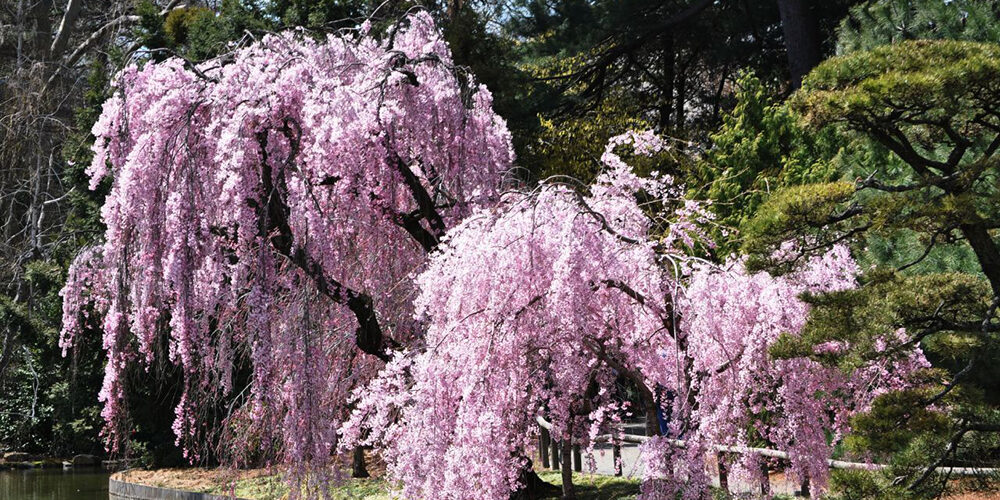Growing Weeping Cherry

A weeping cherry tree is at its best in spring when the pendulant branches are covered with pink or white flowers. It makes a graceful, elegant specimen tree for front lawns where it is sure to attract attention. The various species and cultivars offer a wide range of sizes, from 8-foot dwarfs to 40-foot types with spreading canopies.
Weeping Cherry Growing Tips
If you are considering planting weeping cherries in the landscape, it helps to become familiar with weeping cherry growing tips. Weeping cherries grow and bloom best in full sun, but they tolerate light shade. Well-drained soil is essential in the care of weeping cherries, especially to prevent rot. Good air circulation around the canopy of the tree is important and helps prevent diseases. Therefore, when planting weeping cherries, you should consider the ultimate size of the cultivar and plant the tree far enough from structures and other trees so that you won’t have to shorten the attractive branches. Microbes In Soil: How Dirt Makes You Happy Weeping cherry flowers attract butterflies and hummingbirds, so avoid the use of insecticides while the flowers are in bloom.
Planting
Learning how to plant a weeping cherry tree is not difficult but proper planting is important. You should plant weeping cherries in a hole as deep as the root ball and two to three times as wide. Also, when you set the tree in the hole, lay a yardstick or tool handle across it to make sure the base of the base of the trunk is level with the surrounding soil. Don’t add soil amendments to the hole or the backfill dirt. Amendments encourage the roots to stay in the hole, and you want them to spread into the surrounding soil. Begin filling the hole with soil, pressing with your foot as you go to remove air pockets. When the hole is half full, fill it to the top with water and allow the water to drain completely before filling the hole to the top with soil. Stake the tree only if absolutely necessary, and remove these stakes after one year.
Care
Part of your weeping cherry tree care includes a regular watering regimen. It is important to water weeping cherries during dry spells. Light watering does more harm than good, so apply the water slowly, giving it a chance to sink into the soil as deeply as possible. Adding a 2- to 4-inch layer of organic mulch around the tree helps the soil retain moisture so that you won’t have to water as often. Fertilize the tree with a slow-release fertilizer in early spring just as new leaves begin to bud. One of the best slow-release fertilizers is compost, but you can also use commercial products labeled for flowering trees and shrubs. Tree spikes are very expensive for the amount of fertilizer contained in each spike, and they don’t release fertilizer at a steady rate. One of the most misunderstood aspects of weeping cherry tree care is pruning. Weeping cherries are grown for their long, graceful branches and these branches should never be shortened unless they are diseased, damaged, or otherwise problematic. Remove diseased and damaged branches as soon as you discover them, regardless of the time of year. When branches cross each other and rub together, the friction creates a wound that serves as an entry point for insects and disease. You can usually wait until winter when the tree is dormant to remove one of the branches.
Website: www.gardeningknowhow.com